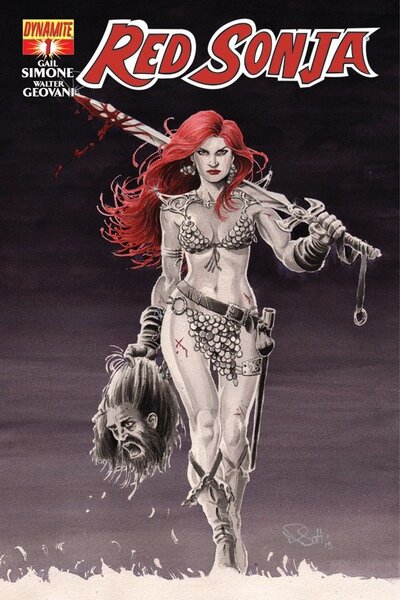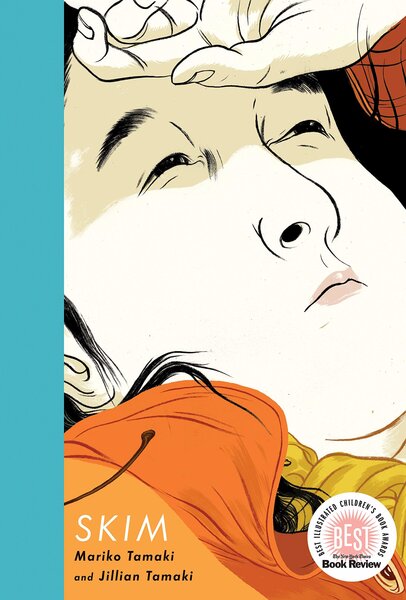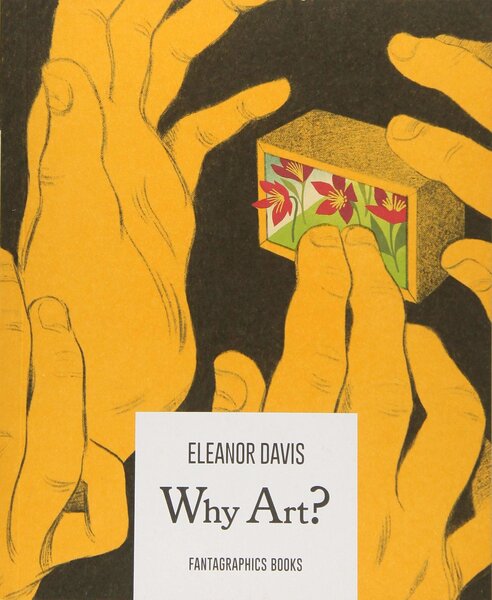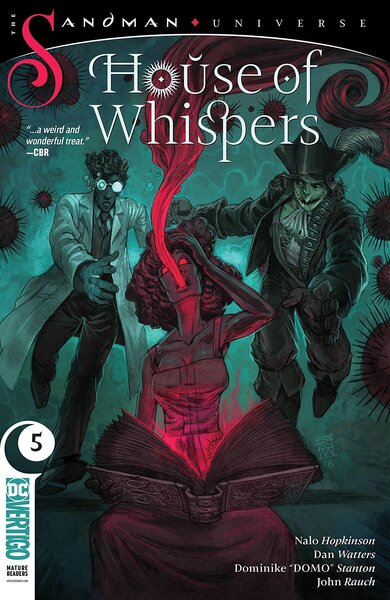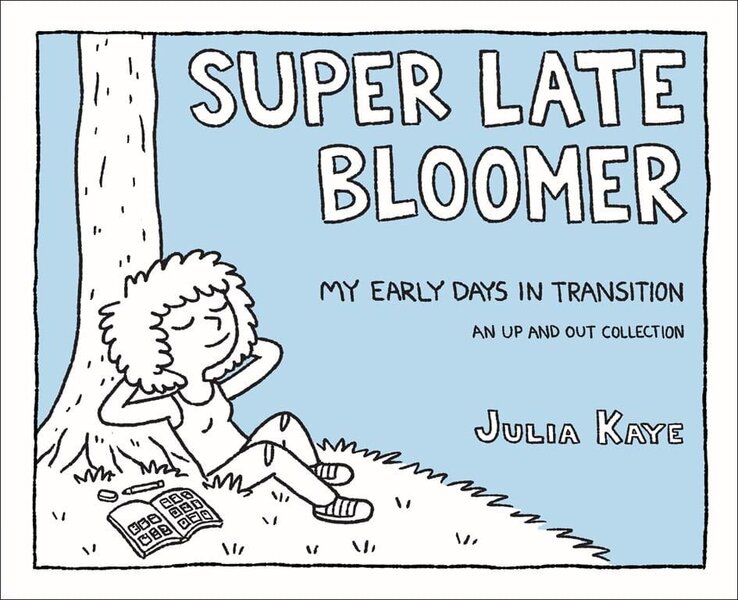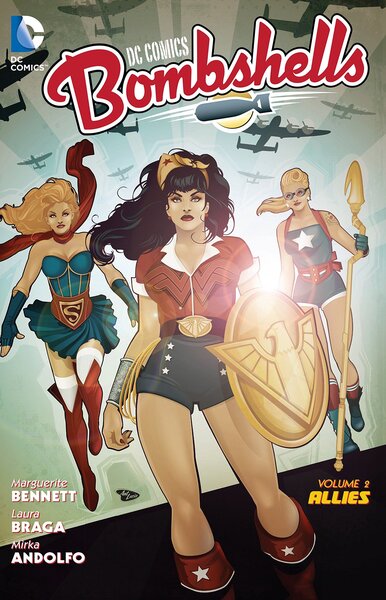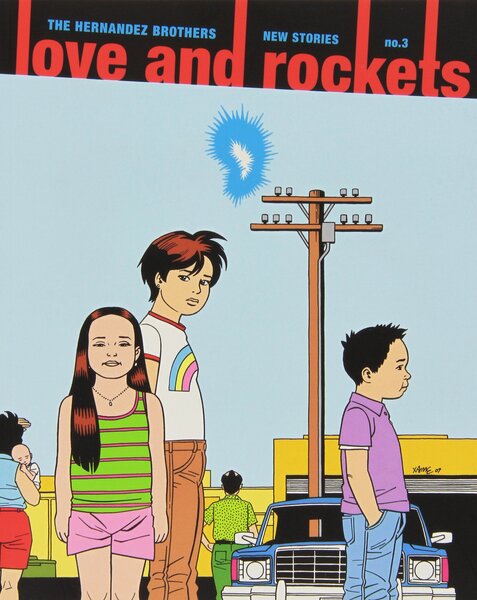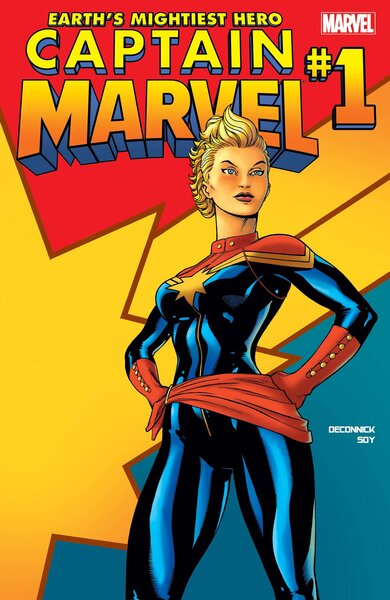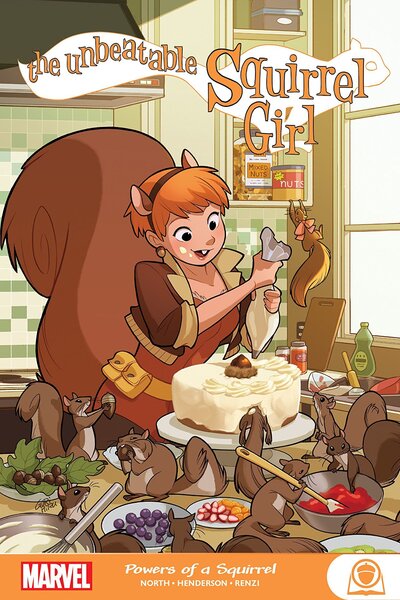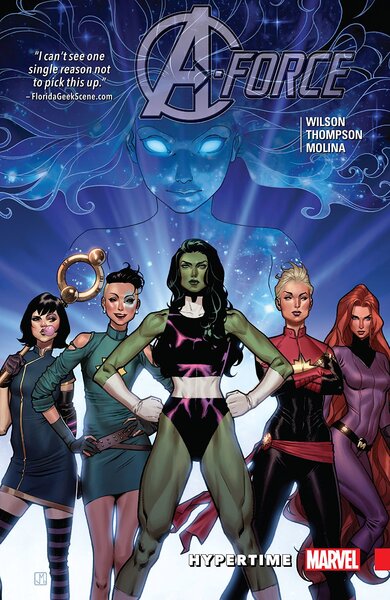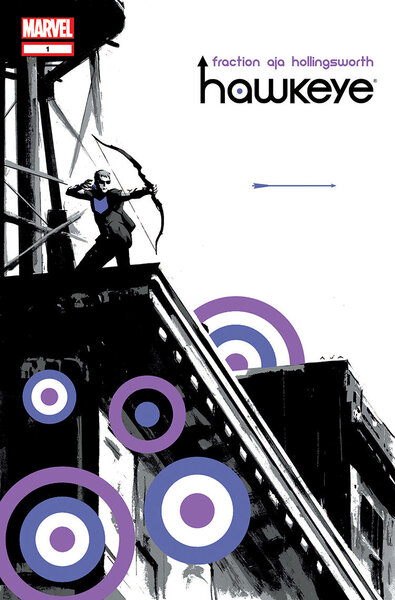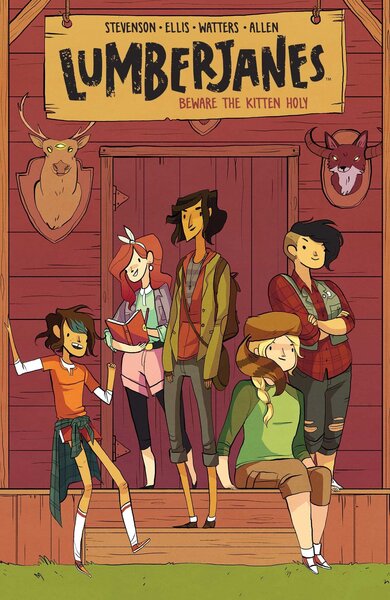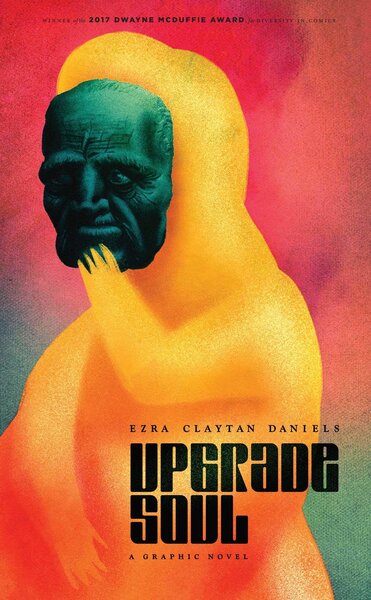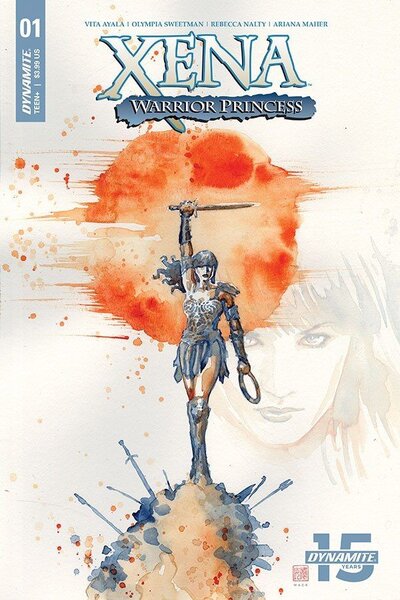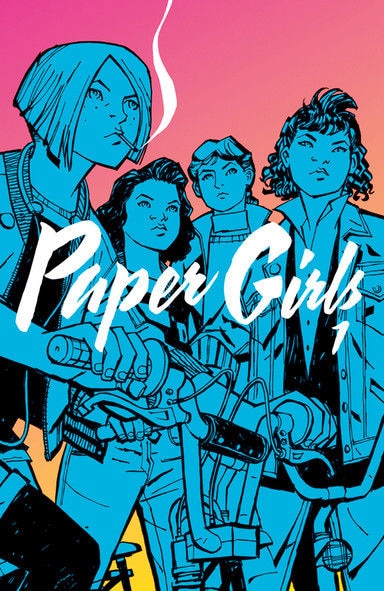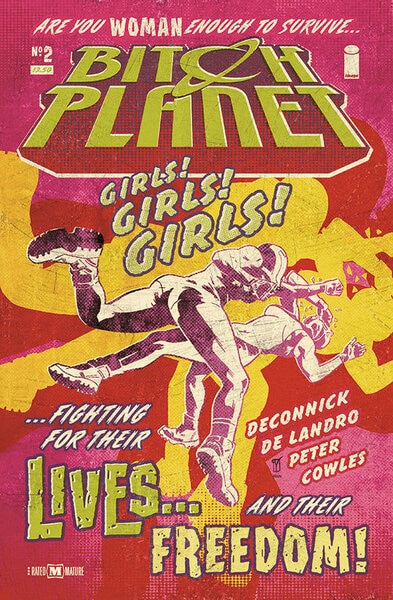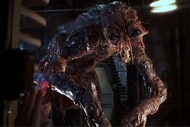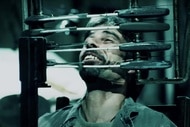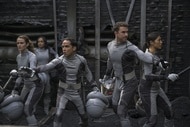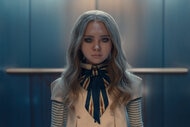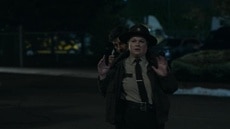SYFY FANGRRLS' favorite comics of the decade
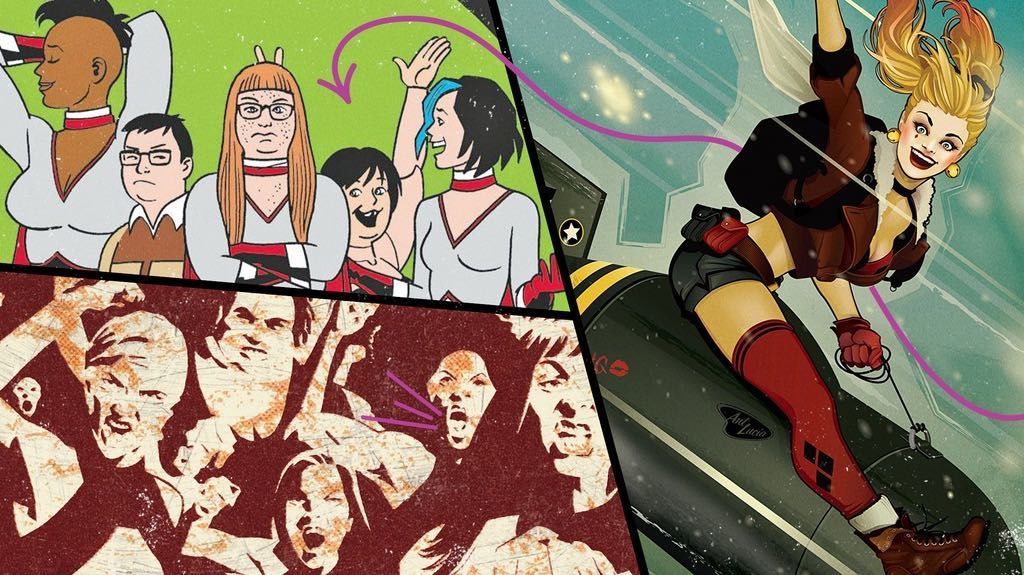
Comics have played a significant role in the nerdverse, and pop culture as we know it, for a long time — almost 200 years, in fact. With that in mind, a decade doesn't really seem like a huge chunk of time in comparison, but the truth is that the comics that have carved out a unique niche for themselves in the past 10 years are doing more and more to further a medium that has already made great strides in storytelling.
It would be impossible for us to list every single comic that has excited us, moved us, shaped who we are and who we want to be as creators, and given us hope for what lies ahead — but based on the last 10 years the future of comics is a bright one, and we can't wait to read whatever the next decade has in store. Here are Team SYFY FANGRRLS' picks for favorite comics of the 2010s.
Red Sonja (written by Gail Simone, art by Walter Giovani)
It is rare that a writer is given the opportunity to redefine a licensed character on their own terms, but that is exactly what Gail Simone did with Red Sonja. Beginning in 2013, we were treated to a new, more feminist take on the She-Devil With a Sword in the Queen of Plagues story arc. Dismissing the premise of a traumatized woman visiting a goddess and making a vow of chastity, we instead see a new beginning for the character unfold. When she is young and her family is killed by marauders, Sonja leads the men into the woods and fights them. Empowering her through tragedy rather than punishing for it as the original tale did, this one choice completely redefined the character’s early years and gave a stronger foundation for the franchise going forward. Writers like Amy Chu went on to continue the story and make Red Sonja a consistent hit ever since. The Simone Omnibus has recently hit the stands, so if you missed out on Dynamite’s first round of this series, this is the exact right moment to pick it up in its entirety. - Sara Century
Skim (Mariko and Jillian Tamaki)
Though both are stellar independent creators in their own rights, the team of Jillian and Mariko is truly unstoppable. A lot of their work would qualify for space on a Best of the 2010s list. The quiet teenage despair that comes across so beautifully and hauntingly in many of their combined works is at its pinnacle in Skim. Based on a teen girl nicknamed Skim as her school attempts to navigate questions of mortality after the death of one of their classmates, the story evolves to be a commentary on many unspoken elements of teenage life — an unhealthy and inappropriate relationship with a mentor, how it feels to watch friends change seemingly overnight, and what it feels like to fully contemplate death before getting the chance to experience life on your own terms. While you could pick up any book with the name Tamaki on it and be in for a treat, there’s no denying that Skim is a masterwork. - Sara Century
Saga (written by Brian K. Vaughan, art by Fiona Staples)
There's no question that Brian K. Vaughan's sci-fi spectacle was one of the best comics of the decade. Compelling and original, Saga creates a space opera that sets a small family story against the backdrop of an intergalactic civil war. At its core, it's a character-driven epic that follows Hazel, the daughter of Marko and Alana. Hazel is the product of two star-crossed lovers from opposite sides of the fighting, and that's shaped who she is. We're given the unique opportunity to watch these characters grow and to grow alongside them with an adult Hazel narrating the story from her birth through adolescence. With the comic currently on hold for an undetermined amount of time, we have a bit of waiting to see where her story goes from her. But Vaughan's storytelling is so good, I have no doubt it will be worth the wait. - Sarah Brown
Why Art? (Eleanor Davis)
As far as meta-commentary on artistic mediums go, Eleanor Davis is a pro, and nowhere is that more apparent than in her 2018 masterpiece Why Art? The title asks a simple, seemingly rhetorical question, then delves into a series of comical responses before flooring us with the real answer — and a lot more questions than we had before. When an artist collective joins forces, we see the subtle ways in which they undermine their own creations, until one of them feels gloriously compelled to destroy all they have created together. A thoughtful meditation on the purpose art serves in our lives, why people create, and why art matters so much to us as a species, Why Art? is an instant classic that is sure to be remembered for decades to come. - Sara Century
House of Whispers (written by Nalo Hopkinson, art by Dominike Stanton and John Rauch, letters by Deron Bennett)
We are noted fans of the House of Whispers series, but there is no way to overpraise this one. Beginning in 2018 as the Sandman Universe began to expand, refocus, and take on more characters, there were a lot of hits, but perhaps none so brilliant and necessary as this. Written by acclaimed horror writer Nalo Hopkinson, this series gave the opportunity to bring the poetic terror of her previous writings to the Sandman Universe. With art by Dominike Stanton and John Rauch, this is a book that is as gorgeous as it is engrossing. Likewise, the Sandman Universe and comics overall desperately needed this take on ancient African gods experiencing diaspora and the New Orleans teens that are dragged along for the ride. HoW is delightful, imaginative, and unique while managing to stay firmly rooted in the mythology that made the original Sandman series so compelling. - Sara Century
Super Late Bloomer (Julia Kaye)
Julia Kaye’s autobiographical debut collects five months of strips from her webcomic Up and Out, which has become a vulnerable, potent record of Kaye’s transition. This collection manages to be more than a series of strips bound together and instead provides raw and gripping insight into the indignities and harrows trans women live with every day. Kaye recounts her journey with hormone replacement therapy, standing up for herself and her right to be called by her name and pronouns, gender dysphoria, and so much more. At times this comic is devastating and painful to read. At times it feels like a trans love story about falling for yourself even while grappling with your identity. Throughout, Super Late Bloomer is a testament to the resiliency of trans women and the power of embracing yourself for who you are. - SE Fleenor
DC Bombshells (written by Marguerite Bennett, art by various)
Imagine a world where all the superheroes are bisexual babes and covert operatives in an alternate history WWII. That world comes alive in DC Bombshells, the deft work of queer writer Marguerite Bennett and a bevy of badass artists including Marguerite Sauvage, Ming Doyle, Laura Braga, Mirka Andolfo, and others. Though the comic got its start as a series of collectible figurines, the narrative will blow your greatest hopes for feminism, queerness, and empowered Bettys out of the water. Heroines include Batwoman, Catwoman, Mera, Wonder Woman, Supergirl, Stargirl, Vixen, Hawkgirl, Poison Ivy, Harley Quinn, Big Barda, and Shazam, to name a few. While the characters are shades of their prime timeline counterparts, they are allowed to explore their attractions to all kinds of people, drive their own stories, and deal with the consequences of their own actions. Hijinks abound in this fun, flirty tale. - SE Fleenor
Love & Rockets (Gilbert and Jaime Hernandez)
Though Love & Rockets began many decades ago and is generally designated to cult classic status, the brothers Hernandez have seldom stopped working on the series. The 2010s indeed saw some of their very best stories as they first tried a new, annual format with the New Stories collections and then made their triumphant return to the tabloid-sized quarterly format of the original series. The beloved punks of the ‘80s have now reached middle age, but like many of us find themselves dealing with many of the same problems. If this series was ambitious before, it has entered an almost entirely different realm at this point as characters have aged and changed and entered and left relationships. The stories have shifted focus and delved into genre while keeping the deeply felt humanity of the original issues fully intact. Watching this story continue to grow all these years later has been nothing short of a gift, so if you’ve fallen off with your L&R fandom, there’s no time like the present to take it back up again. - Sara Century
Captain Marvel (written by Kelly Sue DeConnick, art by Dexter Soy, various)
There's no question that Kelly Sue DeConnick is the reason that Carol Danvers is the person we know and love today. Before her 2012 run, Carol was known as Ms. Marvel, and Captain Mar-Vell was a Kree man who fought to keep earth safe. However, when DeConnick took the reins, she not only promoted Carol up the ranks of the Air Force, but she gave her a much needed defining character arc. DeConnick breathed new life into Carol, making her not only as strong, confident, and competent but also kind and caring. She created a character we all could identify with and many fans donning costumes and dubbing themselves the Carol Corps. It's no wonder that this was the comic run the writers drew from when they finally brought Carol Danvers into the MCU, there was obviously no better choice. - Sarah Brown
Abbott (written and created by Saladin Ahmed, illustrated by Sami Kivela, colored by Jason Wordie, and lettered by Jim Campbell)
Abbott follows the story of Elena Abbott, a Black, bisexual journalist who ends up investigating the paranormal in Detroit in 1972. Black people are being accused of a series of grisly crimes that also target Black people. Only Abbott cares enough to investigate the murders and only Abbott knows there’s something otherworldly going on. Together, the story, illustrations, and coloring manage to evoke the '70s, but like, an even cooler '70s? Abbott herself is equally as cool. She rocks an ascot, smokes cigarettes, drinks brandy, and has no qualms about telling white men who outrank her how wrong they are. She stands up for the people in Detroit — particularly Black folks — who the police and the media don’t care about enough to cover. From the murder of a young Black boy by the police to the more extra-worldly evil that creeps into her city — Abbott will not be scared off. Excerpts from her columns provide exposition throughout the comic, so when we learn about a new part of town, it’s through Abbott’s reporting where she describes how crime, lack of care from the government, and changing times are impacting various neighborhoods. This crime drama should be considered required reading. - SE Fleenor
The Unbeatable Squirrel Girl (Ryan North and Erica Henderson)
The Unbeatable Squirrel Girl gives us a story about truly good people working to help others. It's honestly a comic that shouldn't work, but somehow in the hands of these talented creators, it not only works, it excels. North and Henderson don't shy away from the fact that Doreen Green has always been a bit odd; instead, they embrace it wholeheartedly, giving us a heroine that's a little bit weird, and a whole lot of awesome. The supporting cast, including Tippy-Toe, her chatty and erstwhile squirrel companion, is absolutely terrific and balances Dorren perfectly. And North never hesitated to think outside the box, creating issues such as the zine and the choose-your-own-adventure that was both experimental and innovative. This series was hilarious and fun, and it hurt a bit when it finally drew to an end. - Sarah Brown
A-Force - (written by G. Willow Wilson, Marguerite Bennett, and Kelly Thompson, pencils by Jorge Molina, Ben Caldwell, and Paulo Siqueira, inks by Craig Yeoung and Scott Hanna, colors by Laura Martin, Ian Herring and Rachelle Rosenberg)
There are two A-Force comics: one set during Marvel’s “Secret Wars” event during Battleword and one set afterward as part of the All-New, All-Different Marvel. The first one takes place on Arcadia, a matriarchal island of Battleworld. The first all-female Avengers team lives there together in a seeming femmetopia. The only problem is that Doctor Doom, aka God Emperor Doom (yeah, it’s not great), rules with an iron fist and refuses to allow any infraction. So when Singularity, a teenage girl made of stars, arrives as a refugee and America Chavez breaks a minor rule, feminist riots, hijinks, and a lot of undermining of the ol’ double D occur. Back on Earth-616 after the events of the Secret Wars, that same teenage girl wakes up and seeks out her friends from Battleworld to help her. As she approaches first Captain Marvel, then subsequently She-Hulk, Medusa, and Nico Minoru, Singularity finds that her friends no longer remember her. She slowly helps the team become a team again in a superhero take on “We’re getting the band back together.” Add to that an appearance by an empowered and indomitable Dazzler and her doppelganger Thor Dazzler and you've got two impressive comics. Both runs are iconic, delightful, and powerful symbols of the need for female heroes. - SE Fleenor
Hawkeye (written by Matt Fraction, art by David Aja, colors by Matt Hollingsworth)
Hawkeye has been hanging around Marvel Comics for decades. Still, despite having quite a few comic runs to his name, no one has managed to capture the heart and soul of his character like Matt Fraction. Fraction's series debuted just after The Avengers hit theaters in 2012, and finds Clint Barton living in Bed-Stuy and recovering from the events of the movie. It takes a peek at what he does when he's not busy being an Avenger, which is everything from fighting off the mob, rescuing dogs, drinking coffee, to trying to teach his protégée, Kate Bishop, what she needs to know to be a hero. For a superhero comic, it's an incredibly grounded story that not only touches on mental health but also shines a light on Clint Barton's hearing loss by heavily incorporating American Sign Language into the issues. The story told in the 22-issue run, combined with spectacular art from David Aja, gave heart to a character many had overlooked. - Sarah Brown
Lumberjanes (Shannon Watters, Grace Ellis, Brooklyn A. Allen, and Noelle Stevenson)
This warm, fuzzy story was precisely the comic I needed at exactly the time I found it. The Lumberjanes are made up of campers Jo, April, Mal, Molly, and Ripley, who couldn't be more different from one another, yet the bonds of friendship they form are unbreakable. Sure, there are plenty of mysteries to solve and numerous monsters to fight, but the heart of the story always comes back to these five girls who all support and love each other. It's hilariously funny and weird, while still managing to be relatable and real. And it's wonderfully inclusive, featuring strong female role models, a girl-on-girl crush, a trans character, and girls from all different backgrounds. Shannon Watters, Grace Ellis, Brooklyn A. Allen, and Noelle Stevenson created a comic that is both truthful and compassionate and helps encourage readers to be brave and strong. - Sarah Brown
Upgrade Soul (Ezra Claytan Daniels)
Upgrade Soul is a creepy, delightful mind trip of a graphic novel, bringing questions of privilege, race, genetic experimentation, and human hubris together in a compellingly told, spectacularly illustrated tale. Originally released as a serialized interactive app in 2012, Upgrade Soul was exhibited live at various sites before being re-released as the volume you will find today. Following the celebration of their 40th anniversary—which they commemorate by having themselves cloned, naturally — Molly and Hank find themselves weakened and unwell. When they discover the reason for their worsened state, it throws everything they know into question, except their love for one another. The careful balance of body horror, philosophizing, and tenderness is perfectly accentuated by the deeply emotive coloring and painstakingly rendered facial expressions of the characters. In the end, Upgrade Soul is a meditation on what it means to be human and how technology may change humanity and our conceptions of self. Personally, I adore anything that makes me think with the corners of my mind, pushing me to the limit of what I truly have the capacity to understand—and let me say, Daniels does not disappoint. - SE Fleenor
Xena: Warrior Princess (written by Vita Ayala, art by Olympia Sweetman)
Xena and Gabrielle ride again in this fantastic comic about the Warrior Princess and her search for redemption. Vita Ayala’s reboot takes place sometime near the middle of the iconic TV series of the same name and shows Xena taking on her usual battles on behalf of mortals, only to have her intentions thwarted by (gasp) the Gods! There are so many call backs to the series that it would be impractical to enumerate them here, but it’s worth noting that Xena and Gabrielle aren’t just okay with their mutual attraction in this run, but actively living in companioned bliss. From spooning in bed to kissing in broad daylight, our favorite bisexual besties finally make this thing official. And, thanks to Ayala’s careful writing, their relationship doesn’t feel sensational, but simply natural, something it was never allowed to be on the series. If you were a fan of Xena in the '90s, you’re going to be delighted by where her story is today. - SE Fleenor
Paper Girls (written by Brian K. Vaughan, art by Cliff Chiang, colors by Matt Wilson, lettering and design by Jared K. Fletcher)
Brian K. Vaughan had an excellent run in the 2010s, with this being his second appearance on the list. Who would have thought that a story about paper delivery girls would have been as delightful as it was? They're not your average delivery girls, as they quickly find themselves caught up in the middle of some crazy, sci-fi inter-dimensional time travel adventures. First set in Cleveland in the '80s (a period that had quite the resurgence this decade), the story commits to the aesthetic and makes the setting feel real and grounded, despite the fantastical elements. It's hard not to love this gang from the get-go, and you'll find yourself instantly rooting for them as they kick butt and navigate a war across time. - Sarah Brown
Bitch Planet (written by Kelly Sue DeConnick, art by Valentine De Landro)
Bitch Planet is a 10-issue feminist reimagining of the exploitation film genre, set in a near-future world where women’s rights have been rolled back to an extreme extent. Any woman deemed unacceptable is branded with the letters NC, signifying that they have been deemed “non-compliant," and shipped off to live on a space prison away from the rest of the world. It’s an exaggerated future perhaps, but it’s rooted in very real and current beliefs that are seemingly becoming more commonplace.
In the world of Bitch Planet, acceptable femininity has become something much easier to define and tick off on a checklist. The reverse is also true; the list of things that disqualify you from being accepted as a woman, or accepting of rights, is rigidly defined. Many of today’s biggest unspoken taboos are committed to paper.
While the premise of Bitch Planet on its surface is about the policing of femininity, at its core it’s a story about women reclaiming femininity that the world denies them. It’s about being told you’re not the right kind of woman and saying f*** you in response. At a time of immense anxiety regarding the world and how it might treat me as a woman, it was exactly what I needed to see.
As a trans woman coming out during this decade, Bitch Planet told me it was okay to be an “unacceptable” kind of woman.
The non-compliant brand on all these women is meant to be a mark of shame, a signifier that they failed to be women the way they were meant to. By the time the series' short run is done, it’s a mark of pride. It’s a mark of power, confidence, strength, and a reminder that they can’t stop us from being non-compliant women.
Bitch Planet meant a lot to me when it released in the middle of the decade and has stuck with me since. - Laura Kate Dale
